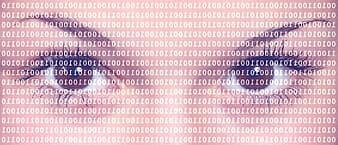Unsupervised Learning Use Cases
Unsupervised learning is a subfield of machine learning that focuses on letting machines learn from data without any human supervision or labeled examples. Unlike supervised learning, where the machine learns from labeled data, unsupervised learning algorithms aim to find patterns or structures in the data without any predefined labels. This approach allows for greater flexibility and the ability to discover hidden insights that may not be apparent to human observers.
1. Anomaly Detection
Anomaly detection is one of the most common use cases of unsupervised learning. It involves identifying patterns in data that deviate significantly from the norm. For example, in cybersecurity, unsupervised learning algorithms can be used to detect unusual patterns in network traffic that indicate a potential security breach. By analyzing network data without any predefined labels, these algorithms can identify anomalies and alert security teams to potential threats.
2. Clustering
Clustering is another popular use case of unsupervised learning. It involves grouping similar data points together based on their characteristics or attributes. For example, in customer segmentation, unsupervised learning algorithms can be used to group customers into different segments based on their purchasing habits or demographic information. This can help businesses tailor their marketing strategies to specific customer groups and improve overall customer satisfaction.
3. Dimensionality Reduction
Dimensionality reduction is the process of reducing the number of variables or features in a dataset while preserving its underlying structure. Unsupervised learning algorithms such as Principal Component Analysis (PCA) can be used to identify the most important components or features in a dataset and discard the less relevant ones. This can be particularly useful in scenarios where the dataset has a large number of variables, as it can help simplify the analysis and improve computational efficiency.
4. Market Basket Analysis
Market basket analysis is a technique used in retail and e-commerce to identify associations between products based on the purchase behavior of customers. Unsupervised learning algorithms can analyze transaction data and identify frequently occurring combinations of products. This information can then be used for various purposes, such as cross-selling or recommending related products to customers based on their purchase history.
5. Topic Modeling
Topic modeling is a technique used to discover hidden themes or topics in a collection of text documents. Unsupervised learning algorithms, such as Latent Dirichlet Allocation (LDA), can analyze the textual content of documents and group them into topics based on the words and phrases they contain. This can be useful in various domains, such as content analysis, sentiment analysis, and information retrieval.
6. Image and Video Analysis
Unsupervised learning algorithms have proven to be effective in image and video analysis tasks. For example, in image recognition, unsupervised learning algorithms can learn from a large dataset of unlabeled images to automatically identify common objects or patterns. Similarly, in video analysis, unsupervised learning algorithms can be used to identify recurring patterns, detect objects or actions, and extract meaningful information from video data.
7. Recommendation Systems
Recommendation systems are widely used in various online platforms to provide personalized recommendations to users. Unsupervised learning algorithms can analyze user preferences and behavior to identify similar users or items, and make recommendations based on these patterns. For example, in e-commerce, unsupervised learning algorithms can analyze historical purchase data to recommend products that are likely to be of interest to a particular user.
Conclusion
Unsupervised learning has a wide range of use cases across various industries and domains. From anomaly detection to recommendation systems, unsupervised learning algorithms offer powerful techniques for uncovering patterns, grouping similar data points, and identifying hidden structures in data. By leveraging the power of unsupervised learning, organizations can gain valuable insights and make data-driven decisions to drive innovation and improve overall business performance.










Leave a Reply